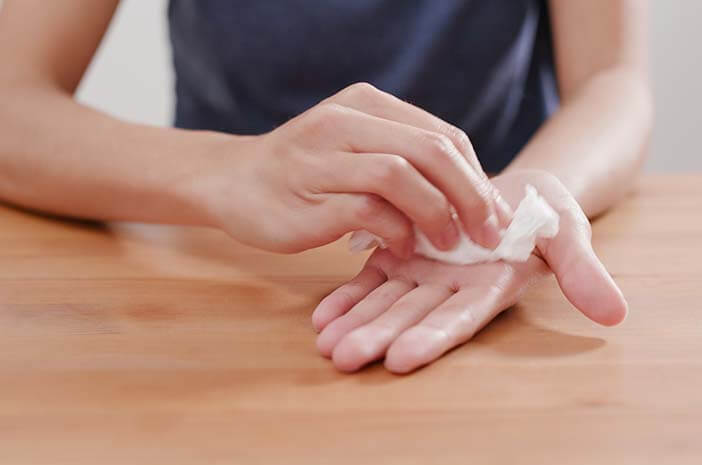Palms often sweat, is it a disease?

DDHK. ORG – Palms often sweaty? Is this something to watch out for because it is a sign of suffering from an illness? Check this out.
In fact, some people often experience wet or sweaty palms. This condition is experienced even if you are not doing activities or are in the middle of hot weather.
Wet or sweaty palms can be uncomfortable or reduce confidence. In addition, palms that often sweat is also a problem disease.
Reporting from Compass, skin and genital specialist Dedianto Hidajat explains, palms that are often wet or sweaty is a sign of hyperhidrosis disease.
"That's called hyperhidrosis. Excessive sweating occurs on the hands and feet, it could also be on the armpits," he said.
Dedianto revealed, hyperhidrosis is caused by genetic or hereditary factors, and stress. In addition, hyperhidrosis can also be caused by other diseases.
"Internal diseases such as disorders of the thyroid gland," he said. According to him, hyperhidrosis can occur since a person is still a child.
"Usually hyperhidrosis can start from the age of the children," he added.
This disease can cause other complications, such as irritation, allergies, viral, bacterial, and fungal infections because the skin barrier is disturbed.
Quoted from MayoClinic, the causes of hyperhidrosis are divided into two, namely primary and secondary. The primary cause of hyperhidrosis is damaged nerve signals, which trigger the eccrine sweat glands to become overactive. Meanwhile, secondary causes are underlying medical conditions or due to taking certain drugs, such as pain relievers, antidepressants, and some diabetes and hormonal drugs.
How to prevent your palms from getting wet or sweating constantly:
- Consumption of drugs
Several medications and treatments can stop persistent sweating. Antiperspirants Usually, these drugs must use a prescription from a doctor. The doctor will prescribe antiperspirant drugs with aluminum chloride, such as Drysol and Xerac AC, which are ointments. However, this drug can cause irritation to the skin and eyes, so care should be taken when using it.
Cream and wipes
Creams containing glycopyrrolate can help relieve hyperhidrosis. In addition, wipes moistened with glycopyyronium tosylate can also relieve this disease. Nerve blocking drugs Nerve blocking drugs can block the nerves that trigger sweat glands. However, these drugs have side effects, such as dry mouth, blurred vision, and bladder problems.
antidepressant
Some medications used for depression can also reduce sweating. In addition, this drug can also help reduce anxiety.
Botulinum toxin (botox) injection
Botox injections block the nerves that trigger sweat glands. Takes a few days to see results. To maintain the effect, it is necessary to repeat the treatment every six months. However, there will be side effects from this method, namely short-term muscle weakness in the injected area.
- Lontophoresis
This treatment is easy to do at home. Simply by immersing your hands or feet in a pot of lightly electrified water for 20 to 40 minutes. Repeat 2-3 times a week. The current will block the nerves that trigger sweating.
- Microwave therapy
The device used is a handheld device that delivers microwave energy to destroy sweat glands. Treatment was carried out in two sessions with a distance between sessions for three months. The duration of one treatment is 20 to 20 minutes. However, side effects are likely to occur, namely changes in skin excitability that are uncomfortable.
- Removal of sweat glands
With this method, a person will not have sweat glands. This method can be done by scraping it (curettage), suctioning it (liposuction), or using a combination of the two (suction curettage). [DDHK News]



